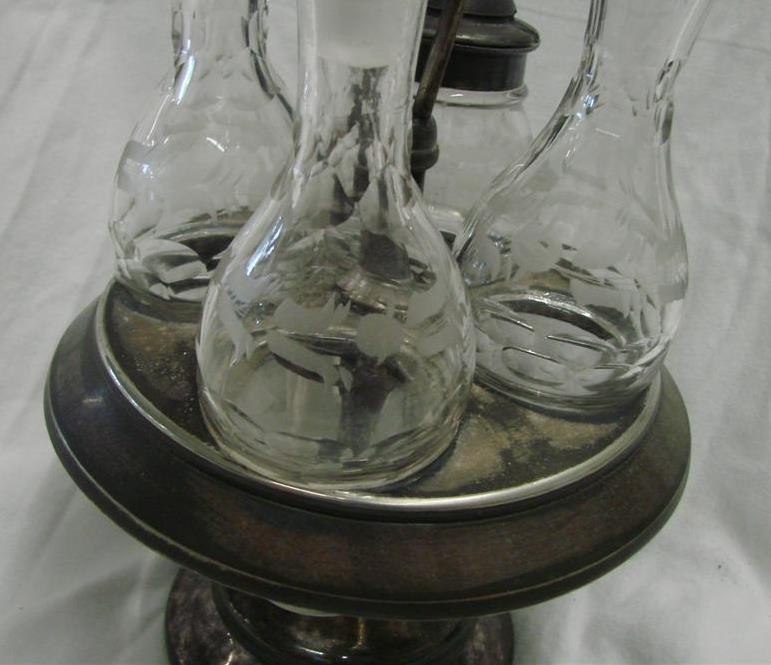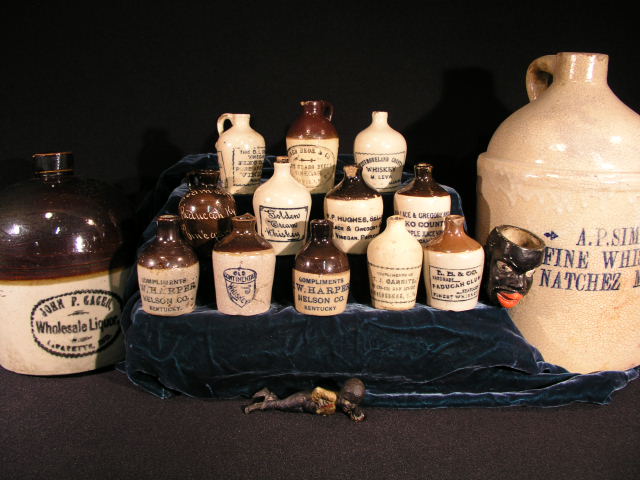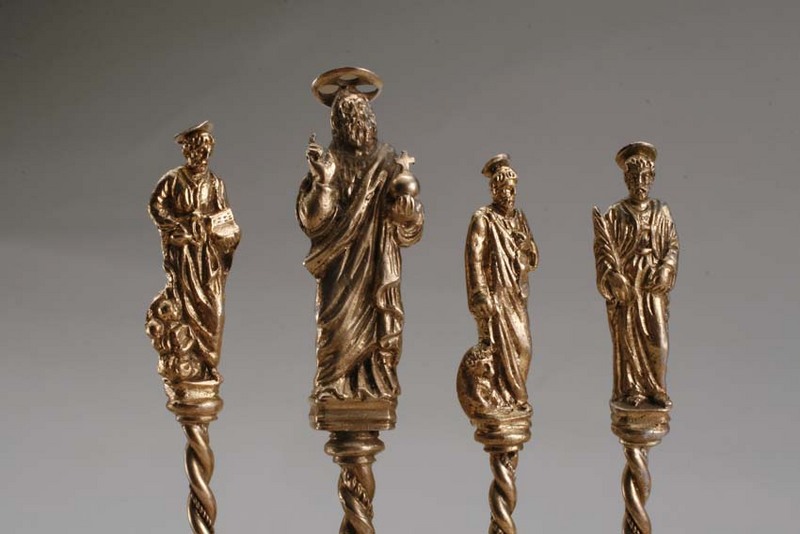The revolving caster was one of the most widely used pieces of Victorian tableware. According to directions for setting the table given in cookbooks of the period, the caster should sit in the center of the table. Manufacturers generally made them of white Britannia Metal and then electroplated them.
 Casters had been used on the table early in the 19th century, but the early type of casters set on a footed tray with center handle and weren’t electroplated. The earliest electroplated casters had a wide pierced band which served as a holder for the bottles, of which there were usually six, plus small salt dips. Makers placed the base on four feet on a wooden bottom, then topped it with an ornate handle in the center.
Casters had been used on the table early in the 19th century, but the early type of casters set on a footed tray with center handle and weren’t electroplated. The earliest electroplated casters had a wide pierced band which served as a holder for the bottles, of which there were usually six, plus small salt dips. Makers placed the base on four feet on a wooden bottom, then topped it with an ornate handle in the center.
In 1860, casters became more elaborate and had bottles of pressed glass. Pressed glass bottle patterns ranged from Bellflower to Daisy & Button, Beaded Dewdrop, Beaded Grape, Medallion Bull’s Eye, Fine Cut, Fine Rib, Gothic, Hamilton, Ivy, Honeycomb, Palmette, Powder & Shot, Thumbprint, Roman Rosette and Eugenia. They even made more expensive ones in cut glass.
The rotary caster, in which the bottles fitted into holes on a circular platform which stood on a tall cone-type base, was patented in 1862. Makers often decorated its center handle with elaborate openwork design. In the 1870’s, they added heavy grape and beaded borders. Later, the low caster came back into vogue and colored pressed glass containers with Daisy and Button pattern or milk opalescent or cased glass became the rage, thus reducing the silver frame to a few wires.
Since the Victorians had a myriad of tableware, each with its own use, there were also pickle and salad casters, their containers being the most interesting feature of these later casters. In addition to pressed glass of blue, canary or crystal, makers used Pomona art glass, opalene twist, imported, decorated ruby glass and cut crystal glass. The glass containers had a fancy plated cover and decorated tongs were fastened to the stand.











